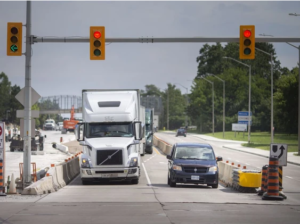
This discussion is missing something, of course; IoT is not supposed to be written about as an environmental risk. The idea that billions of disposable trackers might litter the planet is an alarmist angle, arguably, on a tech-for-good story. Because, in most cases, the mission to attach sensors across all of public and private society is geared to drive efficiencies, and in many cases those efficiencies are directly or indirectly linked to energy-burning actions.
And as IoT sensors get cheaper, even going sub-dollar, their numbers will multiply upwards and their applications will multiply outwards – and energy usage will multiply downwards. That is the story we have not told (but which actually gets told all the time), which is important to re-tell in the context of the scare-mongering about dirty-cheap IoT. “At lower costs, more sensors will be deployed, providing more data across a wider range of use cases.”
This is the line from Derek Wallace, vice president of marketing at the LoRa Alliance, in charge of the non-cellular LoRaWAN standard. “Lower-cost sensors will create new use cases [and] enable massive scaling of many existing ones… Massive IoT has enormous potential to positively impact the environment. The number of green use cases is staggering.” He runs through a few, for environmental monitoring, water conservation, food production.
“The list goes on and on,” he says, before settling on the role of IoT to reduce carbon footprints in buildings of all kinds – and to make them “smart sustainable buildings”, or “blue buildings”.
He explains: “Sustainability has become a broader concept – about a building’s ability to provide a healthy and productive environment over its lifecycle without negatively impacting the natural environment.”
So is there a trade-off with the resources it takes to manufacture, distribute, install, and recycle the IoT gadgetry that is being put into service to drive efficiency and productivity?
Jim Morrish, founding partner at Transforma Insights, responds: “It’s actually very positive, in terms of net impact. Yes, they take resources… but when they’re in use many tracking devices can save significant resources.”
He gives examples of simple IoT-connected mousetraps and tire pressure sensors, saving fuel and labour (and money) on ad hoc manual checks. It is the same for any kind of remotely manageable alert-system, whether for distribution centres, streetlights, or heart monitors. Wallace rejoins, and redirects the conversation back to IoT design principles, echoing Sigfox that the hardware footprint, in the end, should be properly optimised.
The whole point with new(ish) LPWA solutions, of course, is they are geared to last for ages; up to 10 years in the case of LoRaWAN, says Wallace. But he acknowledges as well that IoT solutions must be tailored right. “It is important to plan and actively manage IoT deployments to achieve optimal results with minimal cost and impacts. The industry [must take responsibility] to ensure massive IoT is delivered in a way that is sustainable,” he says.
What does the LoRa Alliance see from its vibrant developer ecosystem, to make IoT greener-by-design? He mentions the same R&D pursuits Sigfox is pushing, around recyclable and biodegradable parts (“eco-friendly components – hydrogen by splitting water molecules,” he says), including batteries, as well as energy harvesting. “New technologies like these will have a profound impact once they’re used at massive scale.”
He adds: “Innovation is a constant, and ensuring that massive IoT is sustainable is at the forefront of development activities. Our ecosystem is committed to deploying products and solutions that are fit-for-purpose, optimized for long-life, and [which] will continue to evolve to not only support environmental monitoring, but to minimize the impact on the environment in parallel.”
What does Morrish, at Transforma Insights as an analyst, regarding the market at every angle from the outside, say about energy harvesting? “Eventually a whole host of techniques will be deployed. The critical factor will be the frequency with which devices need to connect. The more infrequent, the more ‘exotic’ the energy harvesting technique can be – right through to approaches based on changes in atmospheric pressure and ambient temperature.”



